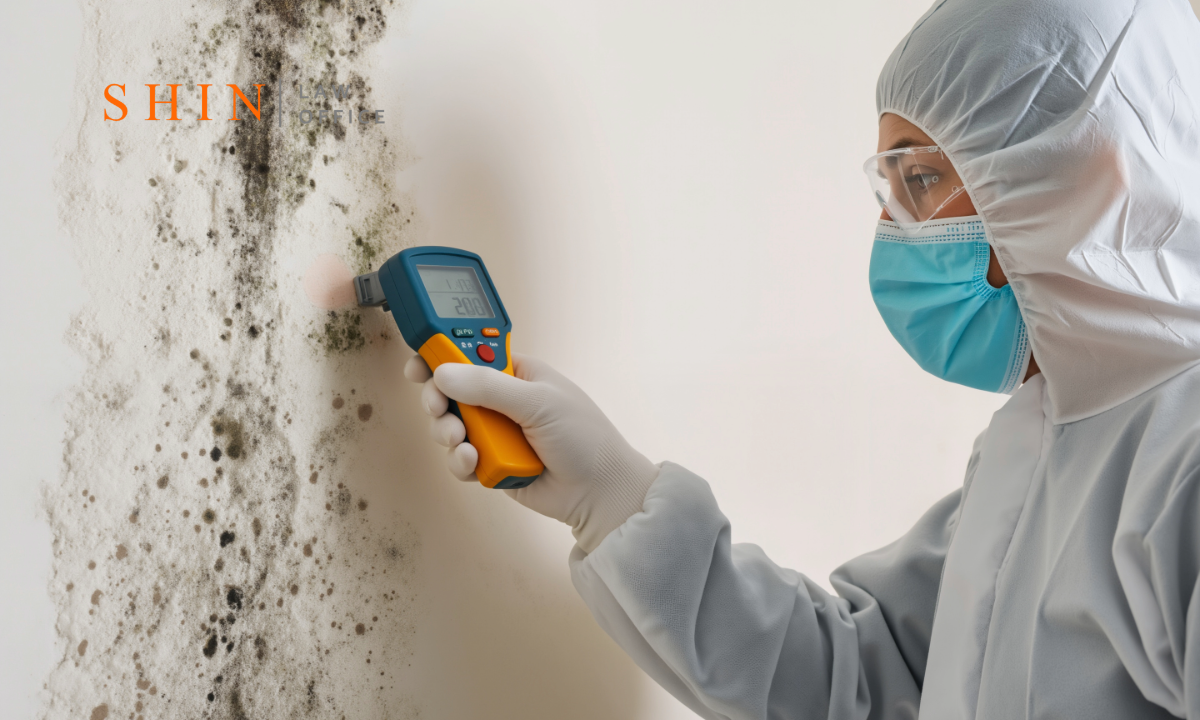By Anthony I. Shin, Esq. | Attorney at Law | Toxic Torts | Shin Law Office
When Age and Moisture Combine to Create a Legal Problem
As an attorney who has handled toxic tort and property damage claims across Northern Virginia, I’ve seen how older homes in Courthouse and Clarendon can quickly turn from charming to hazardous. These neighborhoods are filled with beautiful, historic properties that attract homeowners who value character and location. Yet beneath that charm, age often hides a serious problem: moisture intrusion that can lead to toxic mold.
Water damage in older homes can come from anywhere: leaking pipes, roof deterioration, poor drainage, or even outdated HVAC systems. Once moisture gets in, mold can start growing within a few days. When homeowners attempt do-it-yourself cleanups or hire contractors who fail to properly remediate the issue, the contamination can return stronger than before. That’s when it stops being just a repair issue and becomes a legal one.
How Water Damage Leads to Toxic Mold in Older Homes
Hidden Leaks and Poor Maintenance
Many of the homes in Courthouse and Clarendon were built decades ago, long before modern waterproofing and ventilation standards. Older plumbing and foundations often allow slow leaks that go unnoticed until mold appears on walls, ceilings, or in basements. Even small amounts of moisture trapped behind drywall can, over time, create large colonies of mold.
Flooding and Foundation Damage
Basement flooding is another common issue in these areas. During heavy rain, groundwater can seep through cracks in foundations or poorly sealed window wells. Once absorbed into drywall or wood framing, that moisture fuels rapid mold growth that spreads through the home’s air system.
Failed Remediation Efforts
Improper remediation is one of the most frustrating causes of repeat mold problems. I’ve handled cases where contractors removed visible mold but failed to address the source of moisture, allowing spores to regrow behind walls within weeks. Homeowners then face not only recurring damage but also health risks and repair costs that insurance may refuse to cover.
Recognizing the Signs of Mold and Liability
Health and Property Red Flags
Homeowners often notice warning signs before the situation becomes severe. These include musty odors, discolored paint, warped flooring, or persistent allergy symptoms among family members. Mold-related illnesses can affect breathing, trigger chronic coughing, or cause fatigue and headaches. When these conditions appear after water damage or failed repairs, there may be grounds for legal action.
Who Can Be Held Liable
Liability in mold cases can extend to multiple parties. Contractors who fail to remediate properly, sellers who conceal known water damage, and landlords who ignore maintenance responsibilities can all be held accountable. Even insurance companies that wrongfully deny mold-related claims may face litigation if they act in bad faith.
When Mold Litigation Becomes Necessary
Filing a Mold Claim in Virginia
Virginia law allows homeowners to seek damages when another party’s negligence causes mold contamination. This includes costs for remediation, property loss, health impacts, and even decreased property value. The key is proving the connection between the negligence, such as poor maintenance or faulty repairs, and the resulting mold growth.
Evidence That Strengthens a Case
To build a strong claim, I help homeowners gather evidence such as inspection reports, contractor invoices, air quality test results, and medical records if exposure caused illness. Expert testimony from environmental specialists can also confirm that the contamination resulted from preventable issues.
How I Help Courthouse and Clarendon Homeowners Recover
When I represent homeowners facing mold contamination in aging properties, my focus is on uncovering where the problem started and who failed to prevent it. Many cases involve layers of responsibility—contractors, builders, insurance adjusters, or landlords—each playing a part in the damage. My job is to identify those parties and hold them accountable.
I also work to recover the full cost of remediation and any losses caused by displacement or devaluation of the home. Mold litigation is not just about cleaning up—it’s about restoring your property and protecting your family’s health.
Protecting Your Home and Legal Rights
If you live in Courthouse or Clarendon and your older home has suffered from water damage, flooding, or failed mold remediation, don’t assume the problem will resolve itself. Mold spreads fast and can cause long-term harm to your health and your home’s structure.
Legal guidance can help you recover what you’ve lost, enforce accountability, and ensure proper repairs are finally made. You invested in your home, now it’s time to protect that investment.
— Anthony I. Shin, Esq.
Principal Attorney | Shin Law Office
Call 571-445-6565 or book a consultation online today.




